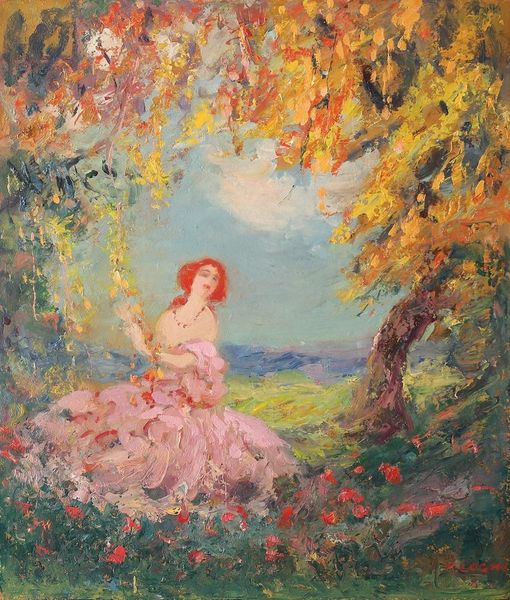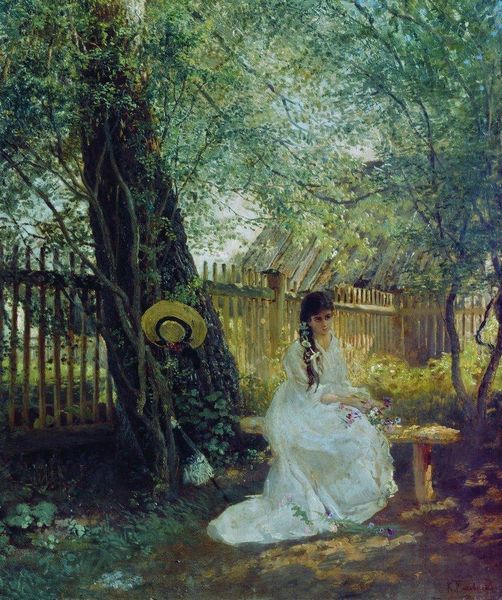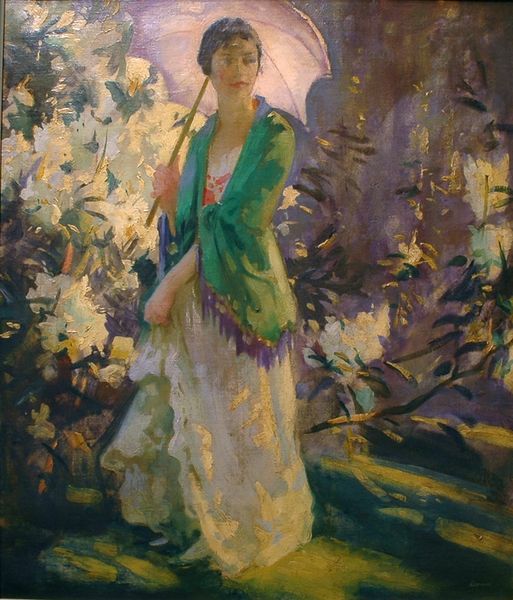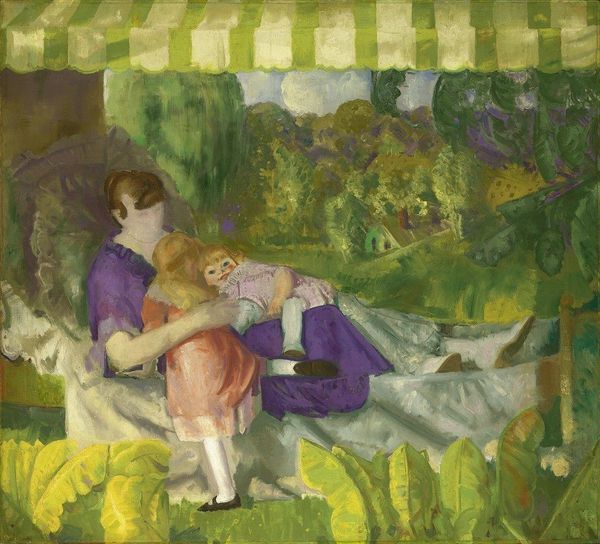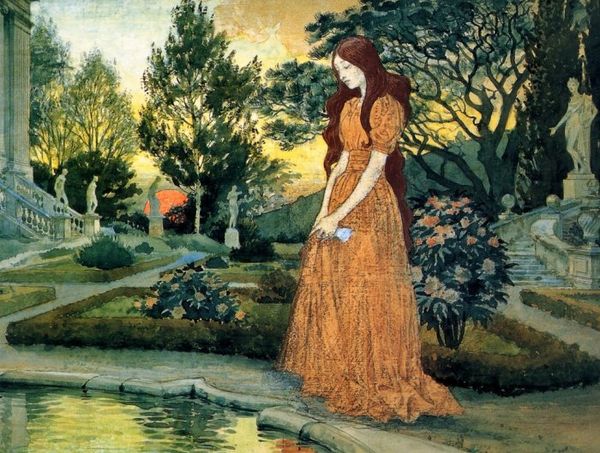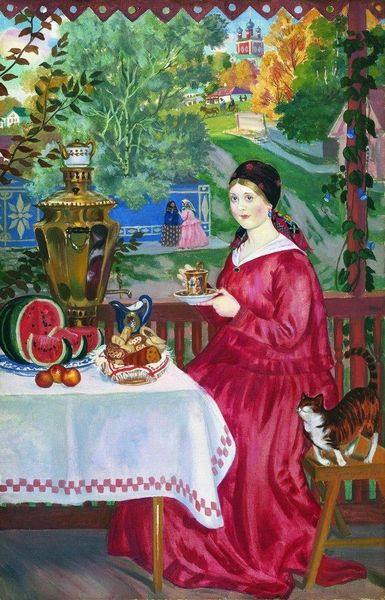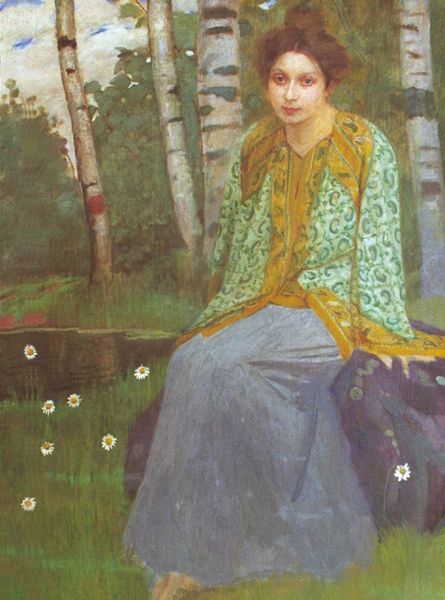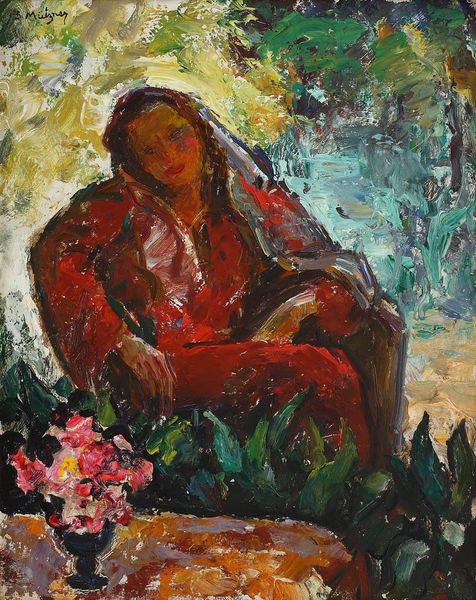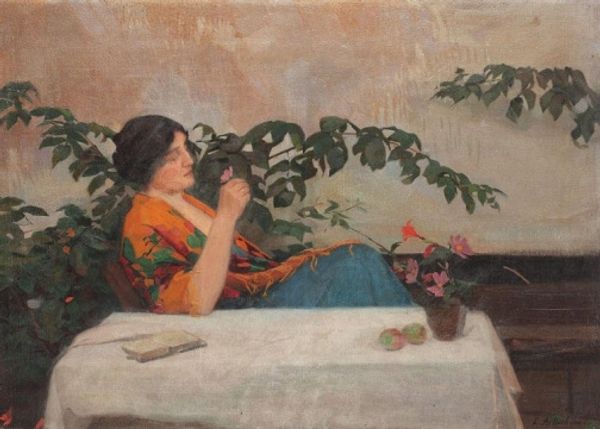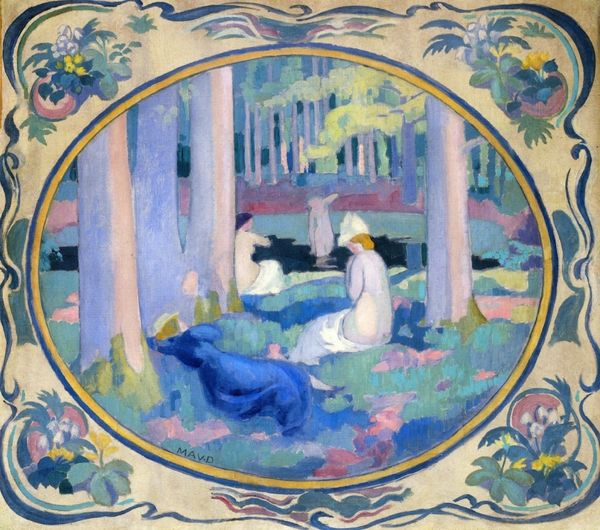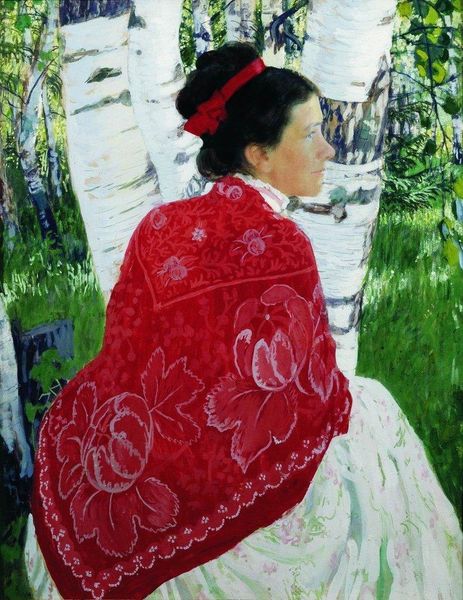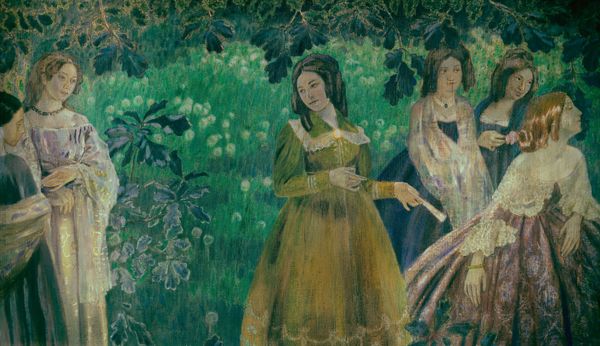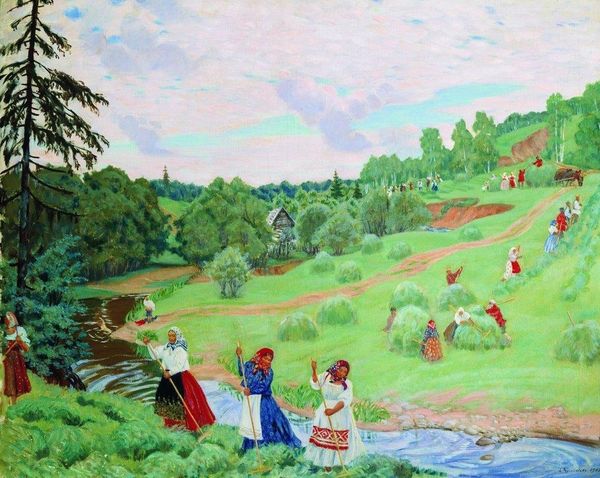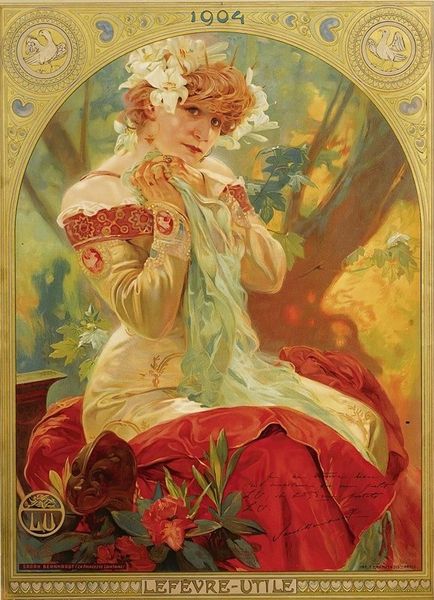
#
chagalll
#
portrait
#
tree
#
naturalistic theme
#
egg art
#
isolated focal point
#
waterfall
#
river
#
house
#
handmade artwork painting
#
forest
#
naive art
#
surrealism
#
water
#
watercolour illustration
#
surrealist
#
remaining negative space
#
female-portraits
#
building
Copyright: Public domain
Curator: Boris Kustodiev painted "The Girl on the Volga" in 1919. It's quite a striking composition. What are your immediate impressions? Editor: It feels like a daydream. There's a hazy quality to the light, a slightly unreal feel, like a memory tinted with longing. And the dog sleeping at her feet is the anchor to the mundane. Curator: Indeed. Let's unpack that. Kustodiev, working in post-revolutionary Russia, frequently turned to images of an idealized past, a Russia of folk traditions and bourgeois comfort. This work seems steeped in that sentiment. How does this influence how we perceive her character? Editor: I see that. She’s very consciously a type. Her attire, shawl, hairstyle, the bouquet of flowers -- these read as cultural markers of a specific era, perhaps evoking a romantic ideal of Russian womanhood that would've resonated strongly against the backdrop of war and societal upheaval. There are several echoes of a sentimental pastoral tradition that stretches back into ancient iconography, even the dog functions as a symbol. Curator: The Volga River itself serves as a potent symbol, does it not? Known as Mother Volga, a life-source. A place both familiar and historical. We have to recognize Kustodiev uses a circular composition which further concentrates our attention on the Volga. What historical forces created those powerful collective beliefs and traditions, what function did they serve? Editor: Exactly. Water almost always represents life, time and memory. Think of all those landscape portraits and how the cultural value of each river varies. Here the artist sets up the character, the river and all that collective memory almost theatrically. She becomes a living embodiment of Russia's spirit. She wears this traditional garb but looks contemporary somehow, so these different layers are built up and support each other in her persona. Curator: Looking closely at the painting's visual rhetoric, you observe the contrast of ideal and mundane within the same picture plane. Is Kustodiev ultimately celebrating or critiquing the sentimental view of Russia? What questions is he posing to his contemporary audience and to those that encounter the work today? Editor: I'm tempted to say both. On the one hand, there's clear affection for the landscape and the types represented. But that idealized quality, seen through the lens of the revolution, also has the potential for critique. Perhaps it questions the relevance, or even the danger, of clinging too tightly to romanticized notions of the past. This complexity makes the painting enduringly relevant, encouraging ongoing discourse around cultural memory, representation, and national identity.
Comments
No comments
Be the first to comment and join the conversation on the ultimate creative platform.
